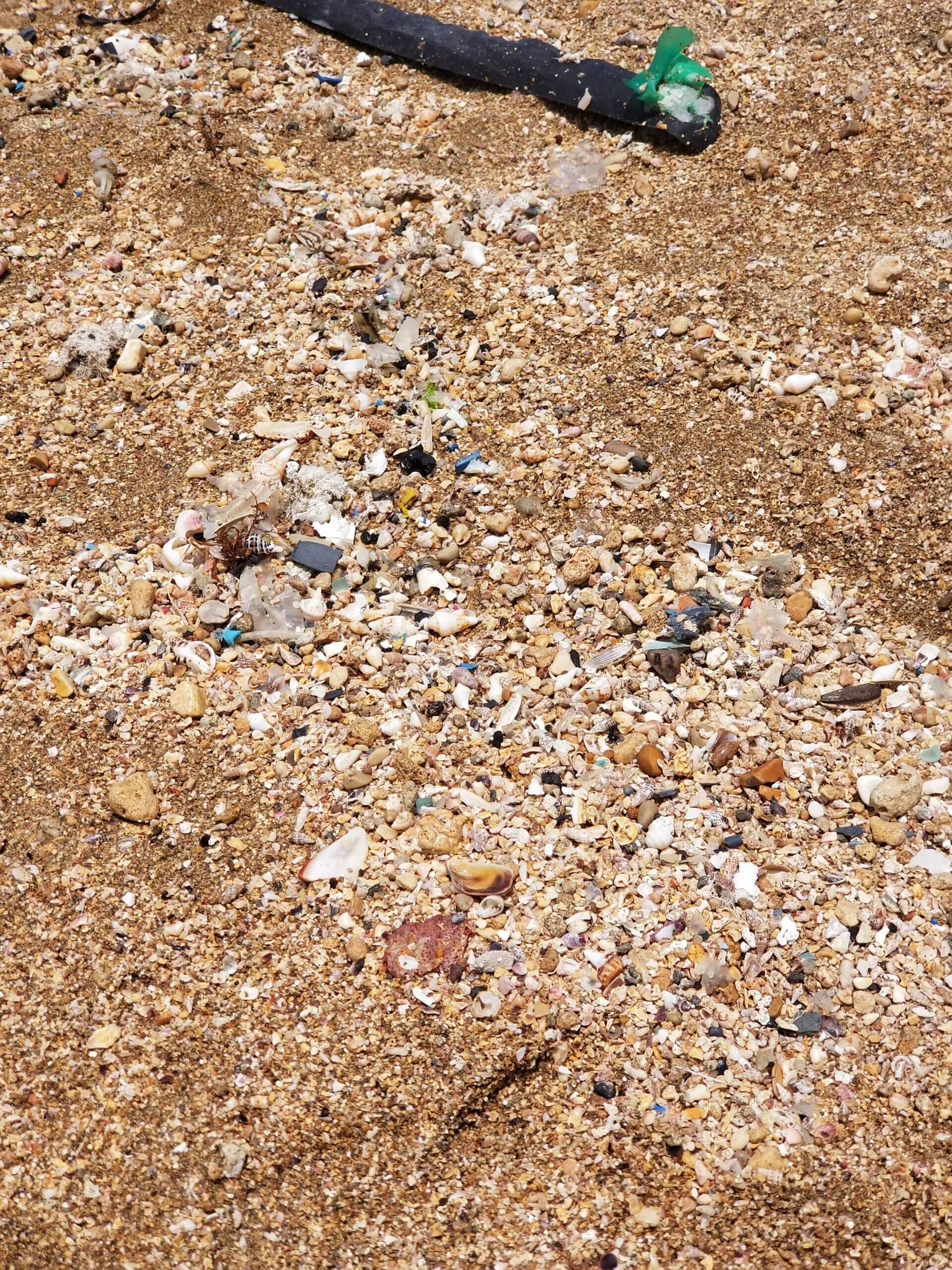The most polluted beaches are Tel Aviv and Hadra. The research findings show that, among other things, the pollution of the plastic originates from food packaging, disposable utensils, and fishing nets. The researchers warn that exposure to particulate plastic waste is inevitable, even though microplastics are dangerous to the environment and human health

A new study by Tel Aviv University in collaboration with the Israeli Mediterranean Research Center examined the level of pollution with plastic particles (called microplastics) along Israel's coastal strip. As part of the study, the researchers collected sand samples from six beaches, from Haifa to Ashkelon. The research findings show that the coastal strip in Israel is polluted by more than 2 tons of microplastics. The most polluted beaches are Tel Aviv and Hadra.
In light of the alarming findings, the researchers warn that although microplastics are dangerous to the environment and human health, it seems that in the current situation in Israel, exposure to particulate plastic waste is unavoidable.
The research was conducted under the leadership of the doctoral student Andrey Eitan Rubin and the student Limor Omeysi from the laboratory of Dr. Ines Zucker, the Faculty of Engineering and the Porter School of Environment and Earth Sciences. The study was published in the scientific journal Marine Pollution Bulletin.
Andrey Eitan Rubin explains that during 2021 the researchers collected samples from six areas along the coastal strip: Ashkelon, Rishon Lezion, Tel Aviv, Hadera, Dor Beach and Haifa. After collection, the samples were taken to the laboratory where various analyzes were performed including particle counting, mass measurements, image analysis and chemical analysis to identify the polymer that makes up the plastic as well as the identification of the elements adsorbed onto the microplastic particles. The researchers discovered, among other things, that the samples included plastic originating from food packaging, disposable utensils, and fishing nets.
Andrey adds: "It was interesting to see that plastic from terrestrial origin (such as food packaging) was more dominant over plastic from marine origin (for example, fishing nets). This indicates the need for better regulation of coastal waste."
The research findings show that the beaches of Tel Aviv and Hadra are the most polluted of the beaches tested. The level of pollution on these beaches that are close to the streams (Tel Aviv - Yarkon and Hadera - Nahal Alexander) was 4 times higher than the level of pollution measured in Rishon Lezion and Dor Beach - the two beaches with the lowest concentration of microplastic particles. At the same time, even in the Dor beach reserve, which is cleaned frequently, microplastic particles were found in a considerable amount.
The researchers estimate that the high level of pollution on the beaches of Tel Aviv and Hadra and the fact that they are in close proximity to creeks indicates that the waters of the creek carry microplastic particles with them into the sea, thus intensifying the level of pollution on the beach.
For example, the researchers estimate that Nahal Alexander collects untreated sewage flushes from the West Bank as well as waste from agricultural and industrial areas located near the riverbeds. In a similar way, the Nahal Yarkon annexes to it an accumulation of microplastics from the industrial centers in Tel Aviv.
Andrey Eitan Rubin adds: "Our research reveals that the Israeli coastal strip probably contains more than two tons of microplastic waste. This plastic slowly breaks down under environmental conditions into even smaller particles. The smaller the plastic particles are, the harder it is to remove them from the environment and the more dangerous they are to the environment and human health. The microplastic particles that drift into the sea are swallowed by the fish, and their remains eventually reach humans."
Dr. Zucker adds: "The study reviews the current state of microplastic pollution along Israel's Mediterranean coast, and is an important step in understanding the effects of the presence of microplastics in the environment. Plastic monitoring research in Israel is still in its infancy, and we must also include monitoring of smaller plastic particles, and additional environmental samples such as sea water and streams in order to further understand environmental patterns in the context of the presence of microplastics. It seems that the exposure to particulate plastic waste is inevitable and we are also working to assess the environmental and health effects that may appear from the findings of the particles in the frequency and high concentrations as found. What is certain is that practical steps are required to reduce Israel's contribution to the microplastic pollution in the Mediterranean."
More of the topic in Hayadan:
